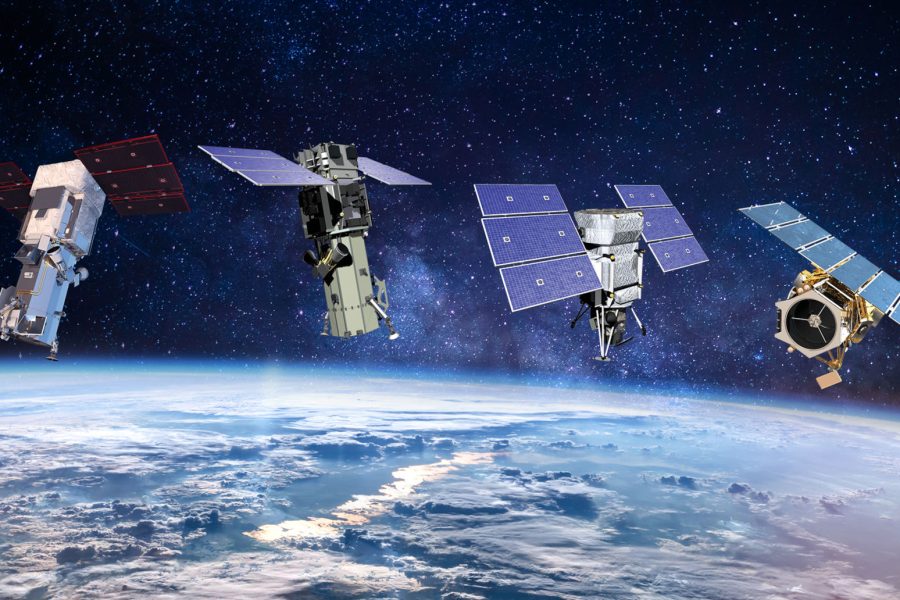Time is running out for the Pentagon to fully integrate commercial space capabilities into its architectures as it said it would in its April strategy, former officials told Air & Space Forces Magazine.
U.S. officials, including CIA Director William Burns, have repeatedly warned that Chinese President Xi Jinping has ordered his military to be ready by 2027 to conduct an invasion of Taiwan, a breakaway self-governing democratic island 100 miles off the Chinese coast.
But the next generation of weapons systems the U.S. military is relying on to prevail in—and thereby deter—a potential war over Taiwan will not be deployed by that time, said Kari Bingen, director of the Aerospace Security Project at the Center for Strategic and International Studies and a former senior intelligence official in the Department of Defense under President Donald Trump.
Instead, the U.S. must rely on employing existing capabilities better than the adversary to deter and ultimately win a conflict, Bingen told Air & Space Forces Magazine on the sidelines of the INSA/AFCEA Intelligence and National Security Summit on Aug. 27. “We need to maximize the premium we get by better integrating the capabilities we have today,” she said, “These next generation systems won’t be online by 2027.”
China is not the only concern. Other U.S. adversaries might be able to benefit from the global revolution in commercial remote sensing and earth observation that the U.S. had unleashed, Bingen said. “Others around the world can also access the same commercial technology. We see that diffusion overall and a much more competitive landscape.”
In its commercial space integration strategy released in April, the Pentagon declared it would “benefit by making commercial solutions integral—and not just supplementary—to national security space architectures.”
The U.S., through government and commercial systems, continues to have an edge on adversaries in space capabilities, said David Gauthier, a veteran of the NGA, the U.S. agency that collects and interprets remote sensing intelligence like earth observation imagery.
But Gauthier, now chief strategy officer for CXO, a consultancy which works to get government contracts for startups, said that is at risk; the U.S. is losing its edge.
“There are, I guess, stagnant elements of our bureaucracy that are slowing down progress and our lead in commercial remote sensing is fading away,” Gauthier said.
“The best time to plant a tree was 20 years ago, and the second best time to plant a tree is today,” he told Air & Space Forces Magazine after the panel where he and Bingen spoke. “Today is the deadline. It’s urgent.”
Gauthier said the DOD intelligence enterprise in space was “completely unbalanced” between build and buy. “Right now, we’re 99 percent ‘build it’ and one percent ‘buy,’” he said. “And we’re going backwards.”
That imbalance is costly.
“Unfortunately, the kind of integration that the U.S. system has preferred in the past,” Gauthier explained, involved government-built proprietary technology which then has to be integrated. “So we pay a huge amount of money to the system integrators” to bolt on commercial capabilities like managed services afterwards.
A better model for integration would be “more of an open system, where everyone’s using standards and APIs and we can have managed services [from different vendors] work with each other,” he said. “That would be flipping the system upside down.”
Bingen said the challenge isn’t just buying the right capability, but figuring out how to get it into the hands of the warfighter in a timely fashion.
“You need all this plumbing to be able to get that data to the edge,” she said.
In computing parlance, the edge typically refers to the farthest reaches of the network: the devices—phones, laptops, desktop computers—in the hands of end-users.
In the military context, the edge also implies the front line. It’s the furthest extent of the military network. In her remarks on the panel, Bingen recalled her frustration as a Pentagon political appointee at the resistance of Defense Department agencies and military services to adopting common data standards. There was no one, she said, whose “core job was to actually have all these systems talk to each other.”
Rick Freeman, the president of government business for Amazon’s Kuiper LEO constellation, said Amazon’s vision for the satellites, slated to come online next year as the first real competition for Elon Musk’s Starlink, is to make its constellations a marketplace for government capability vendors, much in the way smartphones created an ecosystem of apps.
An Android or iPhone “is merely the platform for all of the applications that provide value. … In a marketplace like amazon.com, or wherever you’re shopping, every time you buy something, you’re not buying an Amazon property, you’re buying something from someone else that uses their platform to create an ecosystem of products and applications that you need. We need to be thinking like that about space, via a platform” like the Kuiper constellation, he said.

